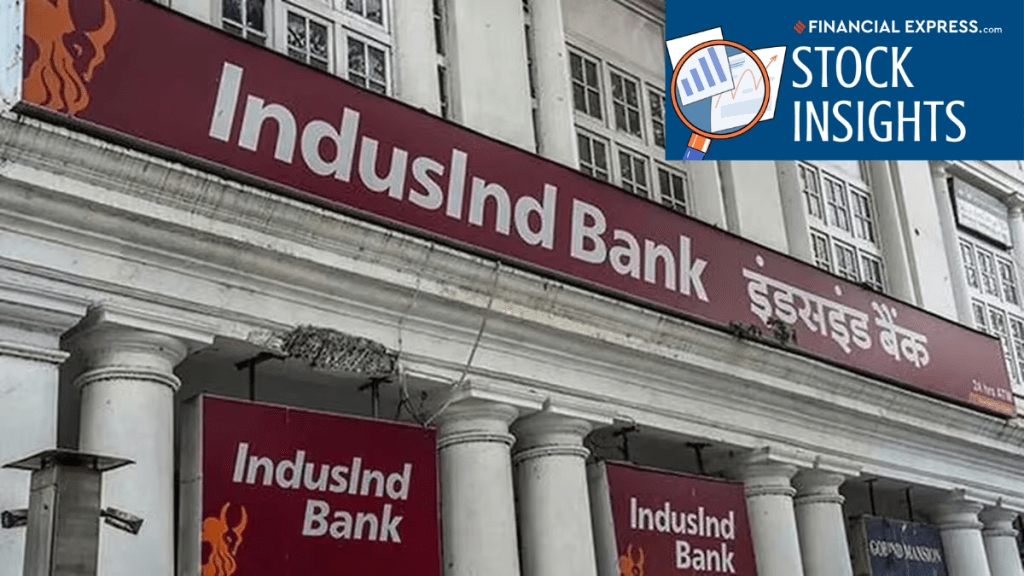Investors on Dalal Street were keen to see whether the operations of IndusInd Bank had shown signs of stabilizing in the June 2025 quarter, given the earlier accounting problems at the bank. The RBI has been very closely monitoring the operations of the bank following the accounting problems that were discovered in the March 2025 quarter, and the subsequent resignation of the CEO.
The IndusInd Bank stock ended 2.6 % lower on Monday at Rs 802.1 and it has risen from its 52-week low of Rs 605.4 that was reached on 12 March 2025.
Performance in the June 2025 quarter
IndusInd Bank’s operational performance has been quite weak vis-à-vis its peers.
In a key operational parameter Net Interest Margin (NIM), for IndusInd Bank it was 3.46 % in the June 2025 quarter vis-à-vis 4.25 % a year earlier. And for Kotak Mahindra Bank its NIM was 4.65 % in the June 2025 quarter vis-à-vis 5% a year earlier. The central bank had cut repo rates in its last meeting in early June 2025, and while interest rates on bank loans / credit facilities have come down, interest rates on deposits with the bank come down with a lag.
Meanwhile, IndusInd Bank’s advances fell 4 % on a y-o-y basis to Rs 3.33 lakh crore in the June 2025 quarter. In contrast, Kotak Mahindra Banks advances grew 14 % y-o-y to Rs 4.4 lakh crore in the June 2025 quarter. And Axis Bank’s advances grew by 8 % y-o-y to Rs 10.59 lakh crore in the first quarter of FY 26.
IndusInd Bank has also made provisions on a consolidated basis amounting to nearly Rs 1,760 crore in the June 2025 quarter, a rise of nearly 67 % on a y-o-y basis. IndusInd Bank’s net NPA % was 1.12 % in the June 2025 quarter vis-à-vis 0.6 % a year earlier.
IndusInd Bank has highlighted a provision coverage ratio (PCR) of 70 % at the end of the June 2025 quarter vis-à-vis 77 % for Kotak Mahindra Bank.
Meanwhile, Kotak Mahindra Bank’s % of net NPAs to net advances was 0.34 % in the June 2025 quarter vis-à-vis 0.35 % a year earlier.
Even, Axis Bank, which had tightened its bad loan recognition policy in the June 2025 quarter, its % of net NPAs of 0.45 % in the June 2025 quarter vis-à-vis 0.34 % a year earlier.
A rise in provisioning resulted in IndusInd Bank reporting a near 72 % y-o-y fall in its consolidated net profit of Rs 604 crore in the June 2025 quarter. The consolidated results of IndusInd Bank include Bharat Financial Inclusion and IndusInd Marketing and Financial Services.
And in the case of Kotak Mahindra Bank, on excluding the exceptional items, in its investor presentation it has highlighted its standalone net profit in the June 2025 quarter fell nearly 7 % y-o-y.
IndusInd Bank’s return on assets (%) annualized was 0.45 % in the June 2025 quarter while Kotak Mahindra Bank and HDFC Bank’s return on assets (average) not annualized was 0.48 % in the June 2025 quarter. On an annualized basis, it would be nearly 1.92 % for the full financial year
Investors on Dalal Street
The RBI is closely monitoring the developments at IndusInd Bank and ensuring full compliance. Investors are also keenly awaiting the appointment of a new CEO of IndusInd Bank and the strategy to bring the bank back to its growth track.
The RBI has been focusing on lowering the cost of credit in the broader banking via several tools including cutting repo rates. Credit demand is expected to pick up across the banking system, going forward. However, if IndusInd Bank is not able to compete effectively in the current environment, the bank risks losing its market share in terms of loans / credit facilities provided, going forward.
Valuations
IndusInd Bank trades at a P/E of more than 25 times estimated consolidated FY 26 earnings and is quite expensive.
HDFC Bank, the largest private sector bank, trades at a P/E of more than 20 times estimated standalone FY 26 earnings.
Clearly, given the uncertainties at IndusInd Bank, investors may want to add the stock to their watchlist to see what happens next.
Disclaimer
Amriteshwar Mathur is a financial journalist with over 20 years of experience.
The writer and his family have no shareholding in any of the stocks mentioned in the article. The website managers, its employee(s), and contributors/writers/authors of articles have or may have an outstanding buy or sell position or holding in the securities, options on securities or other related investments of issuers and/or companies discussed therein. The content of the articles and the interpretation of data are solely the personal views of the contributors/ writers/authors. Investors must make their own investment decisions based on their specific objectives, resources and only after consulting such independent advisors as may be necessary.

